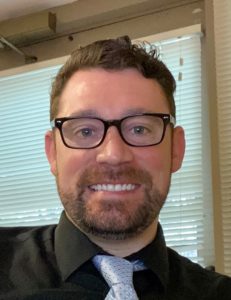
Parkinson’s disease is a crippling and often misunderstood disease process. There are little to no protocols and standards for the care of Parkinson’s residents. They tend to be lumped into the protocols and standards designed for dementia or memory care units.
This is a significant issue for providers. There are more than 1 million people living with Parkinson’s in the United States, and more than 10 million worldwide. Nearly 60,000 people are diagnosed daily, according to the Parkinson’s Foundation.
In fact, it’s estimated that 25% of people living with Parkinson’s currently reside in long-term care facilities, placing a minimum of 250,000 of them into the LTC continuum.
Although this disease process falls under the Alzheimer’s umbrella, this is not an appropriate care path for a system that preaches treating residents and patients on an individual level. Often, the symptoms that mimic dementia or Alzheimer’s do not present themselves until the end stages of the disease process. This means that we, as a long-term care delivery system, have neglected optimal care for this disease process, most notably prior to the end stages of the process.
Parkinson’s patients are likely to see a higher tendency of falls, confusion, choking, aphasia, and increased rates of atrophy and weakness. In broader scopes, quality of life is affected socially by isolation, confusion and depression, all of which will undoubtedly present themselves throughout the progression. This presents flaws in the current treatment of Parkinson’s residents due to those areas often being neglected. Either they are assessed and treated on triggers when in general units or have their care plans shifted to the memory care paths dependent on the disease stage.
Therapy plays a major role in creating a Parkinson’s themed care path. Physical therapy treatments need to focus their approaches on areas such as amplitude training, reciprocal patterns, balance, stretching, flexibility and strength training. Occupational therapy needs to work on all ADLs, but focus on bilateral limb movements and the hands in particular. Speech therapy needs to be involved consistently for increased chances of choking.
Metrics need to be established on a person-centered level and changes in the baselines need to be easily observed. Changes in Parkinson’s are often quicker than in non-Parkinson’s. Consistent therapy sessions with metrics allows for quick detection of even the smallest changes and would allow for quicker action to restore or strengthen the negatives presented in the metrics.
Isolation and depression can accelerate the negative effects of Parkinson’s. This should not be viewed as a chance, but as a certainty of happening. An early stage of Parkinson’s affects the body much more than the brain. This will lead to embarrassment and self-withdrawal for most Parkinson’s residents. Activities must be mindful of this and create an activity program that will minimize the chance for negative outcomes and allow the resident to embrace the social group setting.
Dietary changes are another key issue. Working with the consulting pharmacist, dieticians can introduce foods high in Omega-3, antioxidants, tonic waters, turmeric and yellow mustard (to name a few). Avoiding foods that cause high oxidation levels will slow the natural path and symptoms of Parkinson’s.
Nursing staff also needs to be educated about Parkinson’s. Creation of Parkinson’s specific care plans, as well as being educated to observe and report even the smallest changes to the appropriate department, would prolong the highest quality of life for the resident.
It is the job of every person in the LTC continuum to give the resident the highest quality of life we can, and to lump care paths of a disease process into categories that present themselves at end-stage is denying the resident that ability.
Cory Frasier has been a licensed practical nurse in long-term care for 13 years and recently completed a bachelor’s degree in Long-Term Care Administration at St. Joseph’s College of Maine. He is currently pursuing a master’s degree in Health Care Administration at St. Joseph’s and is working on wrapping up his Administrator-in-Training tenure at Beechwood Continuing Care in Getzville, NY.
The opinions expressed in McKnight’s Long-Term Care News guest submissions are the author’s and are not necessarily those of McKnight’s Long-Term Care News or its editors.




